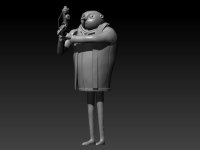So this is kind of a question for @keyth72. I have been working on porting the Funbox planets to the Hothouse. I recently ported the Mars and Earth, and I thought, wouldn't it be awesome to have the Earth's octave on a footswitch with the Mars amp modeling. Obviously there were all kinds of issues with the sample rate between the two, but I think the thing that really killed me is I seemed to overload the processor when combining the two.
So the question I have is:
1. Did you ever get something like this to work, and I should just try harder.
2. Does anyone have a good lightweight octave up and down method?
The DaisySP built-in just doesn't cut it, and there doesn't seem to be any octave down. I have tried a bunch of other methodologies, but haven't had much success.
So the question I have is:
1. Did you ever get something like this to work, and I should just try harder.
2. Does anyone have a good lightweight octave up and down method?
The DaisySP built-in just doesn't cut it, and there doesn't seem to be any octave down. I have tried a bunch of other methodologies, but haven't had much success.



